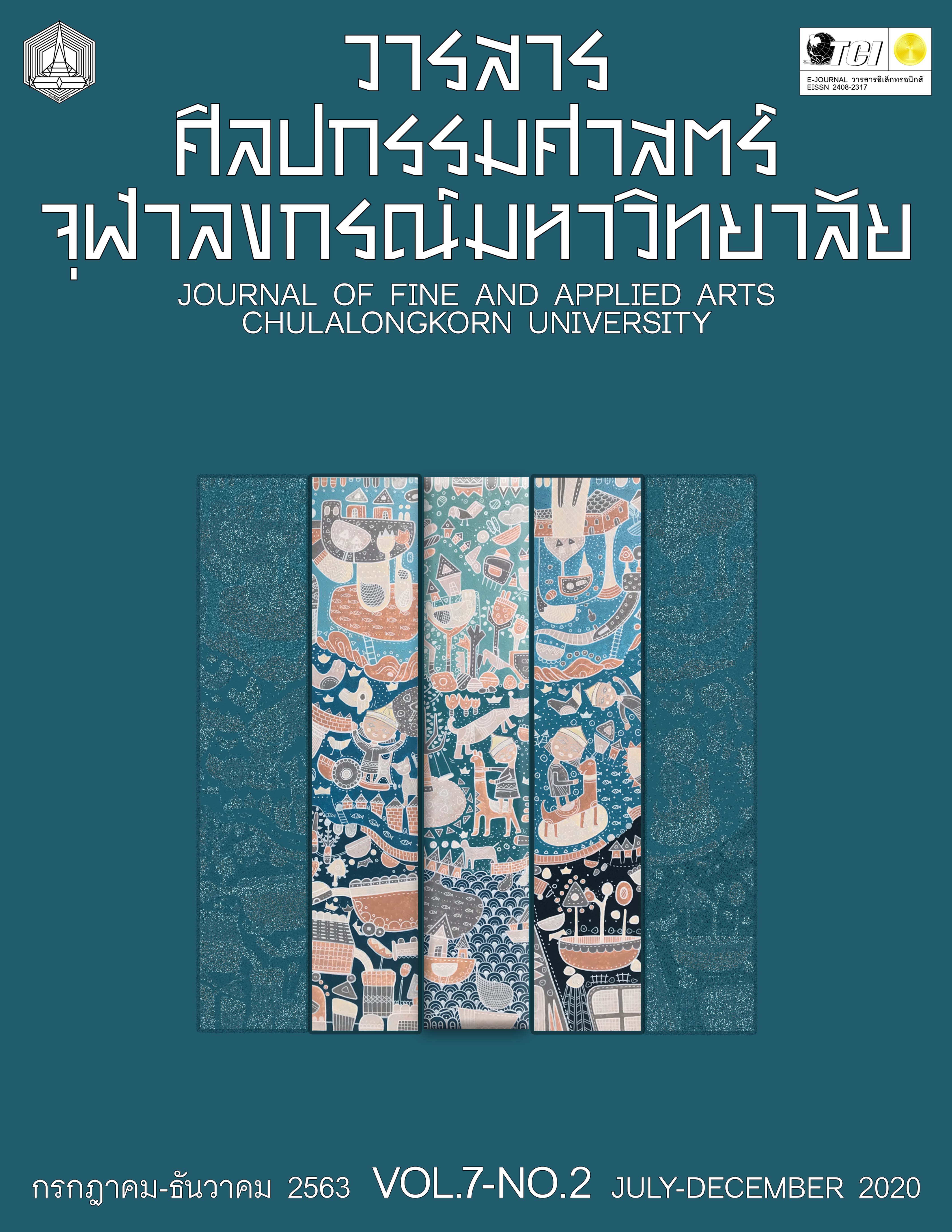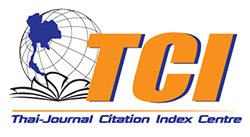Dynamics Brought by Changes from Canon of Thai Traditional Music to Thai Contemporary Music
Keywords:
dynamics, canon of Thai traditional music, Thai contemporary musicAbstract
This article is part of the research titled Thainess in Contemporary Thai Music, and was written with an objective to examine the dynamics of contemporary Thai music in the Thai society. The study found that the dynamics brought by the changes in the canon of Thai traditional music influenced the creation of contemporary Thai music. The performance patterns were sorted out and reflected through songs, music bands, and performances inspired by the new conception within the traditional canon of Thai traditional music that had been passed on from King Rama V era. Attempts were made to bring about a cultural reform to rebuild the national image to be equivalent to that of the neighboring countries. Moreover, the constant expansion of Western culture affected the perception, perspective, and value of Siamese people, and impacted Thai music, giving rise to the new concept that incorporated Thai and Western music cultures.
Consequently, the music styles were resolved, and no longer followed the traditional practice, especially in terms of role, performance, and band formation. For instance, Thai string ensemble, Pipat-Dukdumbun, and musical were originated in that period. Nonetheless, after the Siamese Revolution in 1932, the government called for nation-building to balance the power imposed by the expanding presence of Western nations, particularly the policy to reform entertainment music. The embrace of Western culture by people in the society resulted in more Westernized lifestyles and preferences of Western entertainment. However, the new notion of the state led to the creation of soul-stirring music in Luang Wichitwathakan’s play, and the formation of music bands in the Government Public Relations Department, such as Suntaraporn, Sangkhit Sampan, and applied music. These blended music forms demonstrated the contemporality of music, or, in other words, the hybrid culture of music. The sound and the performance style of Thai traditional music were adapted to reflect Western music. At a later time, these new music forms replaced the traditional entertainment methods, since they could satisfy both people who wanted to preserve Thai
traditional music and those who enjoyed Western music, all at the same time. In addition, these new music forms reflected the concept and strengthened the definition of contemporary Thai music in a clear way, while, in the past, changes in the Thai traditional music promoted the
contemporality in thinking, performance, and band formation within the framework of the canon of Thai traditional music and traditional music with the royal court as the center. The state framework that aimed to combine these two cultural streams brought about a new taste, a new concept, and the widespread construction of social status of people in the society. Meanwhile, it also served as a tool to promote the notion of nation state and Thainess through songs for entertainment, as well as contributed to the creation of music work thereafter.
References
กัลยรัตน์ หล่อมณีนพรัตน์. “การศึกษาเชิงวิเคราะห์ บทละครร้องของพรานบูรพ์.” วิทยานิพนธ์
ปริญญาอักษรศาสตรมหาบัณฑิต, จุฬาลงกรณ์มหาวิทยาลัย, 2535.
ธนกร สรรย์วราภิภู. “กระบวนการสร้างสรรค์นาฏยศิลป์ไทยร่วมสมัย.” วารสารมนุษยศาสตร์และ
สังคมศาสตร์, ปีที่ 9 ฉบับที่ 2 กรกฎาคม–ธันวาคม, 2558 :17-29.
พูนพิศ อมาตยกุล. ดนตรีวิจักษ์ : ความรู้เบื้องต้นเกี่ยวกับดนตรีไทยเพื่อความชื่นชม. กรุงเทพมหานคร :
สยามสมัย, 2529.
ภัทรวดี ภูชฎาภิรมย์. “การเปลี่ยนแปลงของวัฒนธรรมความบันเทิงในสังคมกรุงเทพฯ พ.ศ. 2491-2500.”
วิทยานิพนธ์ระดับปริญญาดุษฎีบัณฑิต, จุฬาลงกรณ์มหาวิทยาลัย, 2547.
ราชบัณฑิตยสถาน, พจนานุกรมฉบับราชบัณฑิตยสถาน พ.ศ. 2554. กรุงเทพมหานคร : ศิริวัฒนา
อินเตอร์พริ้น จำกัด, 2556.
วรเทพ อรรคบุตรและคณะ, “โครงการศึกษาบทบาทเชิงรุกของภัณฑารักษ์ต่อพลวัต และการสร้างสม
ทุนทางวัฒนธรรมแก่ศิลปะร่วมสมัยไทย.” สำนักงานศิลปวัฒนธรรมร่วมสมัย กระทรวง
วัฒนธรรม, 2558.
เสถียร ดวงจันทร์ทิพย์. “พัฒนาการของดนตรีไทยร่วมสมัย.” สัมภาษณ์โดย ณัฐชยา นัจจนาวากุล.
กุมภาพันธ์ 2560.
อานันท์ นาคคง. “การศึกษาดนตรีไทยร่วมสมัยแผลงานดนตรีไทยร่วมสมัยในสังคมไทยในปัจจุบัน.”
กรุงเทพมหานคร : สำนักศิลปวัฒนธรรมร่วมสมัย กระทรวงวัฒนธรรม, 2556.
Downloads
Published
Issue
Section
License
ลิขสิทธิ์ของบทความเป็นของเจ้าของบทความ บทความที่ได้รับการตีพิมพ์ถือเป็นทัศนะของผู้เขียน
กองบรรณาธิการไม่จำเป็นต้องเห็นด้วยและไม่รับผิดชอบต่อบทความนั้น






